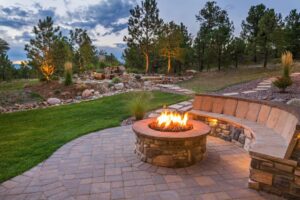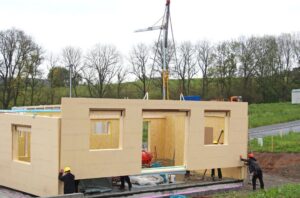The sustainable design uses less energy, water, and materials to reduce environmental impacts and build healthier and more productive buildings.
Sustainable designs are becoming increasingly popular as people seek to minimize their carbon footprint. Here are a few ways to incorporate green design into your custom home building plans.
Energy Efficiency
Energy efficiency (EE) is critical for reducing greenhouse gas emissions and pollution from energy production. It can also help lower utility bills, create jobs, and stabilize electricity prices.
Incorporating EE into your custom home building plans from design-build contractors like ECO Minded Solutions is an essential design element to consider when designing a sustainable and beautiful home.
Many new homes are built with low-emittance (low-E) windows that reflect heat and UV rays from sunlight, helping to keep a house cooler without wasting excessive energy. Other standard energy-efficient features include LED lighting, compact fluorescent light bulbs, and efficient HVAC systems.
Choosing green building materials and construction methods for a new home is another important way to make it sustainable. It can help to reduce energy and water use and can improve the quality of indoor air.
Water Efficiency
Incorporating sustainable design into your custom home building plans can lower energy, water and maintenance costs. From orientation to materials, solar power and renewable energy systems, there are many ways you can make your home greener and reduce your impact on the environment.
A good custom home builder can help you incorporate these features into your new house. These elements include energy-efficient finishes, renewable flooring, low-VOC paints and adhesives and Energy Star appliances.
Another essential element of sustainable building is water efficiency. A well-designed water-efficient house can save on your water bill and conserve natural resources while protecting your family’s and the environment’s health.
Materials
Choosing sustainable materials is essential when incorporating sustainable design into your custom home building plans. This can mean opting for wood harvested sustainably or using products made from recycled materials, such as countertops, furniture and appliances.
In addition to reducing the environmental impact, it can also help save money on energy bills. Using energy-efficient lighting and heating and cooling systems will reduce your utility costs and the amount of waste you produce.
Sustainable construction methods and materials are increasingly becoming mainstream. The benefits are numerous: they lower carbon emissions, use less water and reduce the overall footprint of your home.
Orientation
Sustainable design focuses on minimizing the building’s impact on the environment while still meeting program requirements. Its principles include using green materials, limiting the amount of waste and limiting the use of non-renewable energy resources.
Site orientation is one of the most fundamental aspects of building design and the foundation of sustainable design. It involves evaluating a property’s climate and natural resources, including the sun’s path over the site, seasonal recurrences, prevailing winds, and trees.
Orientation and other elements of a home’s layout, such as window placement, can help maximize daylighting and reduce energy demand for heating and cooling. It also minimizes the need for auxiliary energy systems, leading to lower energy bills, reduced greenhouse gas emissions, and improved comfort.
Lighting
One of the easiest ways to help when incorporating sustainable design into your custom home building plans is by using energy-efficient lighting. This can go a long way in saving you money on your monthly bill and keeping you healthier by providing more natural light into your home.
When choosing to light, shop for the best people- and planet-friendly brands. Look for a company that sources its materials locally and produces its products socially responsibly.




